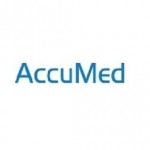Masks are the covers for the face filtering face piece respirators. They have been a fashion and public health staple for the duration the COVID-19 pandemic
KN95 Masks are basically the China's Version of the N95 masks.
What's the difference between N95 and KN95 masks?
KN95 masks can be described as the Chinese version N95 mask. They are scored according to China's standards and are both considered FFRs. This means that they both have negative pressure air-purifying particle respirators in the form a mask. Because the U.S. did not have a sufficient supply of masks or the manufacturing capability to make the required personal protective equipment (PPE), hospitals turned to China and purchased KN95s in large numbers. After analysing K95 masks, the ECRI Institute in America, America's largest patient safety agency, determined that as much as 70% did not comply with U.S. National Institute for Occupational Safety and Health standards for effectiveness, issued a hazard alert in September 2020.
According to the nonprofit, 60%-70% of nearly 200 KN95 masks imported from 15 different manufacturers did not filter 95% of aerosol particles.
Although the institute cautioned against the use by healthcare institutions of KN95 masks when treating COVID-19 patients directly, they did recommend their use in clinical settings that involve limited contact with bodily fluids. KN95 masks, even if they don't comply with U.S. regulatory standards, provide greater respiratory protection than surgical or cloth masks. They can also be used in some clinical settings. Staff and hospitals that treat COVID-19 patients need to be aware that some imported masks may not comply with current U.S. regulations, despite claims by marketing." Michael Argentieri is vice president of technology and safety at ECRI.
A second study was conducted by researchers from Harvard and MIT, the Greater Boston Pandemic Fabrication Team. It raised alarm bells about possible counterfeits in the KN95 masks.
The scientists stated that "due to the lack of publicly available information about mask suppliers in FDA EUA, and confusing or inconsistent labeling KN95 masks it is difficult distinguish legitimate from counterfeit products,”
KN95's regulation and non-standardization are the main concerns
A KN95 mask is not typically fit-tested, but N95 masks have been evaluated, tested and approved by NIOSH. A KN95 mask can block 95% of viruses, but there's more variability in N95 masks, said Dr. Monica Gandhi MD, an Infectious Diseases doctor and professor of medicine at UC San Francisco. KN95s, however, are generally well-fitted and made from a non woven polypropylene material which should block a large percentage of viral particles.
FDA guidance states all N95 respirators cleared and labeled by the agency as "single use," disposable devices. But, the COVID-19 pandemic quickly decimated PPE supply chains around the world, forcing medical systems and individuals to choose between plan B, C and D.
The effectiveness of the masks was 97.3%, 95.1% and 95.1% at first, but it dropped to 95.1%, 75.2%, and 77.9% once sterilization took place. KN95s were particularly resistant to this cleaning method.
No doubt cleaning it with water is the safest method to clean N95 or KN95 masks, as each retains at least 95% its original efficiency.
Unsung Benefits of Masks
Masks protect the wearer from becoming infected so there is a transmission benefit. Our idea, which is not only ours, but also others who are pushing the viral inoculate concept, is that it will help us have less severe disease.






Comments